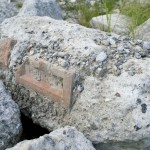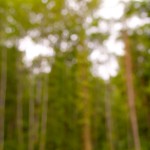Jul
31
2011
A friend offered to lend me his Sigma Dp1s so that I might sip from the sweet Foveon Kool Aid. OK those weren’t his words or likely his intent, thanks Duncan. Let me be clear though this camera has some major shortcomings that can’t be ignored. It’s slow, the sort of slow where I could load a roll of film faster than it can write a file to a card. The rear LCD appears to exist to show your settings and to confirm that yes you did capture something. The metering also did some serious highlight clipping even when I had -1 exposure compensation, of course I had no way of knowing this until I got the files into my computer (see previous sentence). For all other complaints please refer to the rest of the Internet. Now for the positive side and where the argument for the purpose of this camera begins. It produces nice sharp noise free files with accurate colours. It has a 16mm f4.0 lens on an APSC sized sensor which is unique and while on the slow side it performs very well. The close focus distance is quite long at 30cm so that does limit some of the creative possibilities. I guess for me the unanswered question now is how large an image can be rendered from these files. As is well documented the sensor captures 3 colours at different layers but the file dimensions are 2640×1760 however you slice it. Aside from the issues of speed I actually like the simplicity of the camera and it’s compactness. I was able to configure the otherwise useless (wide/tele) buttons to control ISO, why does a camera with a fixed focal length have these controls? This arrangement ends up in practice being the best of any camera I have ever used, wide decreases ISO, tele increases ISO, simple and immediate making ISO the third variable much like my DSLR. I easily moved between ISO 50 to 400 and even found ISO 800 to be largely noise free. So while I will reserve any final verdict until I have seen an image printed, it appears that the only thing standing in this cameras way from being a good photographic tool is it’s glacial speed, and exposure system. Whether these issues are adequately addressed with the latest version the Dp1x I can’t say but any improvement in speed would be welcome.
10 comments | tags: Cameras, Digital, Dp1s, Sigma | posted in Cameras, Photography
Jul
29
2011
Not every image needs to have a deeper meaning, I do enjoy photography sometimes just for the mere fact of the doing. These images fall into that category.
2 comments | tags: black and white, BW, Nikon, p7000, Photography | posted in Photography
Jul
27
2011
Well it’s back to the drawing board. My “lets see what we get and go from there” attitude didn’t pay off with much of a result to start. There was just too much light leaking in. So it’s going to require a major redesign with some baffles and better sealing around the lens board. Some other modifications I’ll make is better tension of the film and a better film mask so that I can get more exposures from a single roll.

Here is the result and if you consider this is the best that I was able to get, by far, you can see that I need to do a lot more work.

Here is the original post when optimism was high. Lego Camera
1 comment | tags: camera, film, Lego | posted in Cameras, Photography, Uncategorized
Jul
26
2011
Here are some more intentional out of focus paintings, oops I mean photographs.
2 comments | tags: DSC-V3, focus, Photography | posted in Cameras, Photography, Processing
Jul
25
2011
Just a few shot’s from a demolition site. I took some other photo’s for painting references.
1 comment | tags: Concrete, Photography | posted in Photography, Processing
Jul
24
2011

It’s a bit of a thorny issue, talking about the P7000’s focus which causes moments of wonderment, such as why didn’t it focus on the object in front of it or why does it focus only after a second press of the shutter button. Most of the time it is great and I don’t expect perfection but I do like consistency. One area that I couldn’t find any info about was the minimum focus distance for different equivalent focal lengths. I suspect the value given in the spec. sheet is just for the widest lens setting. So I did some testing and these are my results with a high contrast target and measuring to the front of the camera body.
28mm……1 3/4″ , 35mm……2 1/2″ , 50mm……6 3/4″ , 85mm……..13 1/4″ , 105mm……15″ , 135mm…….15 3/4″ , 200mm……16 3/4″
Yes it looks odd to me as well to have the focal lengths in metric and the distance in imperial but that was the tape measure I had on hand.
no comments | tags: Cameras, Nikon, p7000, Photography | posted in Cameras, Photography
Jul
21
2011
While it doesn’t actual replace the need for a wide angle lens, stitching images together can help in a pinch. I wanted to get a reference image of this old bulldozer but I was too close with the lens that I had (that’s a whole other story as to why I only had a 28mm prime lens with me). My solution was to meter the scene for all aspects and then shoot a series of images in manual mode. It’s necessary to control the exposure to ensure a good match, if you let the camera control the exposure then as you frame each image it will want to make changes to the shutter speed and aperture. So once I have all my images back home I use a piece of software that is actually free, not spam spam spam and pay us a fee, Microsoft’s Image Composite Editor. It does such a good job I would hate to be a commercial company trying to make a similar product.

And after the magic I have an image that would have required a much wider lens to create.

no comments | tags: stitch, wide angle | posted in Composition, Photography, Processing
Jul
19
2011
Sorry there is no prize, actually there is no contest either. I just thought two people with unusual pets in one week deserved their own post.


Update, while not a pet this Heron unfortunetly flew into a building in the older part of Abbotsford and was stunned and possibly injured so on the instructions of the SPCA the heron was covered with a blanket as we waited for someone to come by to take it for treatment.

no comments | posted in Photography
Jul
17
2011
I’ve been thinking about this for years but I finally took the time to build a medium format LEGO camera. What made the effort all the more desirable was that I was recently given the perfect lens for the project, A Schneider Kreuznach Angulon 65 f6.8. It’s hard to say how wide this will end up being but the negative is about 9 Lego bricks wide so it should be about the equivalent of a 28mm on a 35mm film camera. Lego is not inherently light tight, every seam is a light leak, so I used some black paper inside to keep that down. The lens board was held in place by some light sealing material, otherwise known as tape, and elastics. This provided for a “very accurate” focus mechanism provided you have your eyes closed. There actually was no focus I had previously ground a small piece of glass and used it to roughly determine that the lens board should be about 67mm from the film for infinity focus. If your getting the sense that I’m not really sure of the results then your right. I will send the film off and wait a week just to find out if it worked and how badly the light leaked. I hope I’m pleasantly surprised but if I keep my expectations low then it will be easier to exceed them.

3 comments | tags: camera, film, Lego | posted in Cameras, Photography










































